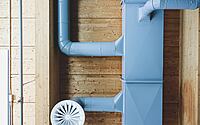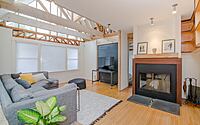The Importance of Energy Efficient HRV Systems in New Build Homes
Usually referred to as HRV, a heat recovery and ventilation system is something every homeowner should become familiar with because of all the benefits to be derived from a simple, cost-effective installation. What exactly is an HRV system and how can it benefit you when you are already in one of the loveliest homes already steeped in technology? Sadly, that might be the underlying reason why you really should understand just what a ventilation system can do for your family, as well as that amazing structure you call home.
What Does an HRV System Do?
One of the real issues within today’s new build homes is the fact that there is a strong emphasis on energy efficiency, and as a result, they are sealed literally air tight. What home ventilation solutions do, in effect, is ventilate and filter the air you are breathing so that you aren’t continually taking in air you, or someone else, exhaled. Then there are allergens and contaminants such as mould spores, dust mites and animal dander, along with any number of particulates that are literally trapped in the home.
If you have air conditioning, you may already have filters, but they don’t bring in and circulate fresh air! They aren’t able to reduce the same amount of humidity that leads to a build-up of mould spores. And we all know that those spores quickly turn to a build-up of black mould, which is another problem altogether. What does an HRV system do? In short, it keeps your family and home healthy!
Are They Really Energy Efficient?
Here is one of the leading concerns that many homeowners have. Let’s address that right now. Many people ask if bringing in all that cold air in the winter months would lead to higher energy usage whilst seeking to keep the temperature comfortable in their home. Not only will energy bills be higher in that case but higher bills would mean that we are using more electricity, much of which is still manufactured with fossil fuels. Less than one-half of the UK’s electricity is produced from renewable sources, so energy efficiency is still a major concern. That shouldn’t be an issue if the unit is located properly!
Again, the real problem would centre on where the unit is mounted. If it is located in the loft or near a ceiling, all that hot air that has risen will help to heat the influx of fresh, albeit cold, air. These units cost just about 1p a day to run so they are already super energy-efficient. Added to that the ability to circulate warmer air, and they are increasing the efficiency within any heat source you are currently operating.
If your home is in the process of being built, it is recommended that you install an HRV system to provide both energy-efficient heat and ventilation. An HRV installation in a situation like this would be the least expensive and most logical way to get that ventilation you need.
- by Matt Watts




